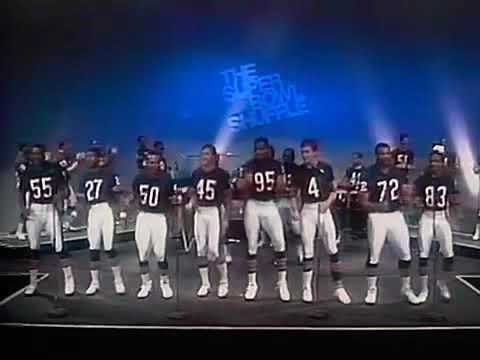Bears All-Time Top 5 QBs: The Punks Meet the Godfather
Featuring a Punky QB, Smokin' Jay and Barking Mad Harbaugh.
Don’t look away in horror! The Bears all-time Top 5 QB list might not measure up to the Packers list, or even the Chargers list, in terms of performance. Personality-wise, however, it may be up there with the Titans/Oilers or Raiders.
1. Sid Luckman
Luckman’s father, Meyer Luckman, was a mobster in 1930s Brooklyn in the era of Murder, Inc. A few weeks after Luckman graduated from high school, Meyer was charged with the murder of his brother-in-law, who had allegedly embezzled money from the family trucking business, which was almost certainly not just a family trucking business. The brother-in-law was found “stuffed in the rear luggage compartment of a car in a garage at 225 Moore St. He had been beaten on the head and strangled with his own necktie,” per Brooklyn Eagle reports of the time. “Near his body was found the butt of a billiard cue.”
Meyer went up the river to Sing Sing. He would die in prison. Sid went onto gridiron stardom at Columbia. George Halas drafted him second overall in 1939; it was the fourth amateur draft in pro football history. Luckman wanted to make the family business legitimate. But Halas made him an offer he could not refuse – a $5,500 salary – and spared him a Michael Corleone story arc.
The NFL of the 1930s was not like the modern NFL. It was a league of such questionable repute that a Brooklyn mobster’s son could give it the side-eye. Halas was a little bit of a godfather. He had a network of college coaches beholden to him. The Bears made money and had national name recognition that no other franchise could boast. So Halas had better intel on college football than any other owner/manager/coach and the credibility to sign players who might otherwise stay on the farm or in the neighborhood back when NFL money wasn’t that great. The amateur draft was instituted to keep the Bears from gobbling up all of the best players; Halas agreed to it when he realized that his share of the road gate receipts would increase if opponents could put up a fight. But the draft was hardly a competitive disadvantage for the Bears: other teams were picking names off All America lists and hoping the lads would sign, while Halas was getting tips from all over the country, then negotiating with players who knew how good the Bears were and his money was.
Halas also had the best football minds on earth at his disposal. The T-formation was bubbling up as a collegiate innovation in the 1930s, and Halas was quick to adopt it. Halas unveiled the scheme in 1940, with Luckman truly under center, unlike the A-formation or single-wing tailbacks who preceded him. The Bears went 8-3, then beat Washington 73-0 in the NFL Championship.
Luckman completed an unheard-of 57.1% of his passes in 1941, leading the Bears to another championship. Luckman threw 28 touchdown passes and led the Bears to a third championship in 1943. It was the greatest passing season of all time at that point. Luckman was pro football’s first bona fide quarterback, and he was making it the most important position on the field.
World War II inevitably intervened. Halas enlisted in the Navy, leaving the Bears to his assistants. Luckman enlisted in the Merchant Marines, which allowed him to return to Chicago and play for the Bears on weekends. But he wasn’t always stateside. Luckman spent the 1944 offseason shuttling supplies from England to France. Yes, he was at D-Day on June 6, 1944. Yes, he was back in the Bears huddle on September 24th. He threw four interceptions in a loss to the Packers, but let’s not miss the point.
Manpower shortages and Halas’ absence eroded the Bears’ competitive advantages. There just weren’t many athletic lads in their 20s to go around who were not overseas by the mid-1940s. Luckman was one of them, and he led a state-of-the-art offense. He led the NFL in passing yards and touchdowns in 1945 and 1946, leading the Bears to a fourth championship as Halas and the boys came marching home.
Luckman remained effective in 1947-48, but the playing field rapidly leveled, a new generation of modern quarterbacks began to emerge, and Paul Brown and Otto Graham began spearheading the next phase in the tactical evolution of pro football over in the AAFC.
If you have been reading carefully, you realize that Luckman’s on-field accomplishments come with a pile of asterisks. He played what was essentially an all-new position in a system unlike anything the NFL had ever seen. He played for a team that had personnel-acquisition advantages that are hard for modern fans to comprehend. His wartime efforts did not interrupt his career, and he sometimes faced opponents who cobbled together one roster of 4Fs and 30-somethings from two merged franchises.
Luckman might have been the right man in the right place at the right time, but he was also a pioneer, a combat veteran, a survivor of the Great Depression-era gangland violence, a truly American individual. A biopic of his life would require the combined talents of Steven Spielberg and Martin Scorcese, and viewers might mistake it for a Forrest Gump-like allegorical pastiche. Luckman helped keep pro football alive during World War II and taught us a whole new way to play the game. Bears fans are justifiably frustrated with their team’s quarterback history, but they should be proud that Luckman is at the top of this list.
2. Jim McMahon
Asking how great Jim McMahon truly was is like asking how truly great the Sex Pistols were. If you are looking for virtuosity or longevity, look elsewhere. If you are seeking raw, rebellious energy, however – the kind that can not just shake up but briefly bulldoze the establishment – you have found your guy.



